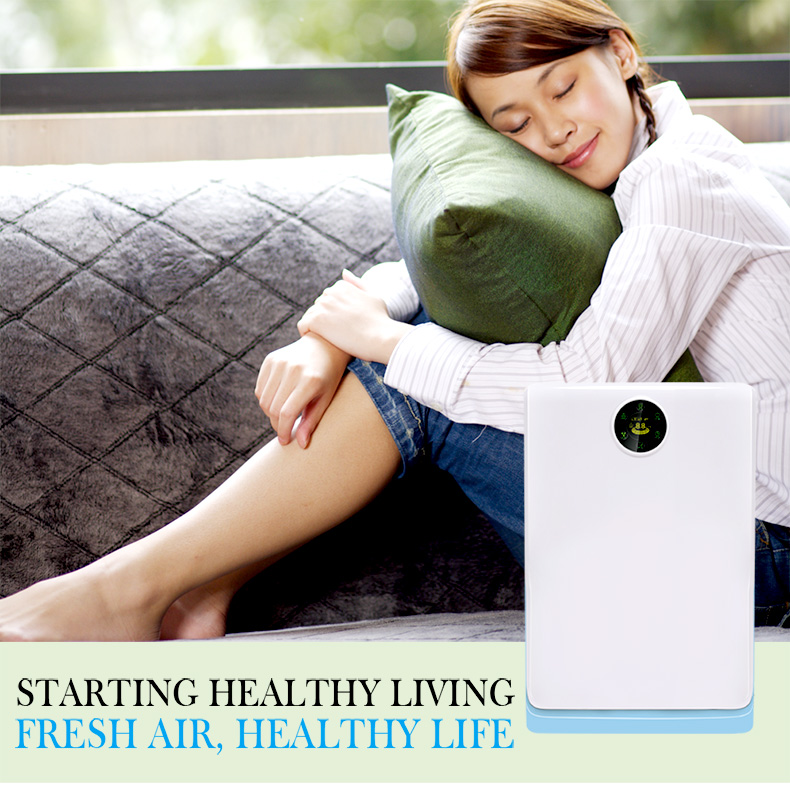The truth about indoor air pollution is by smell?

In recent years, after the air quality improvement battle, the outdoor air quality has improved significantly. However, indoor air pollution has become another pain in people’s minds. Both adults and children spend nearly 22 hours a day indoors. People obviously don’t care about indoor air pollution. When the fog is outside the window, people think that closing the window can block the pollution. But in fact, when the outdoor air pollution is serious, the indoor air is also poisoned by formaldehyde, TVOC, benzene and other pollution sources. With.
Source of indoor air pollutants
Indoor air pollution sources such as formaldehyde, TVOC, and benzene are mainly emitted from building materials, interior materials, and daily necessities. At present, there are more than 500 kinds of volatile organic compounds in indoor air, including more than 20 kinds of carcinogens and more than 200 kinds of pathogenic viruses. In addition to formaldehyde, TVOC, PM2.5, PM10 and other indoor air pollutants can not be ignored. In addition, the relatively closed limited space promotes the reproduction and spread of microbial contaminants such as bacteria, viruses, pollen and dust mites attached to the micro-particles. If it is in public places, the situation will be more serious, especially for people who are highly dependent on the population. And airborne influenza A virus, etc.
The indoor air pollution situation is so serious that many people still rely on their own sense of smell to make a judgment, which will lead to a more serious situation. Indoor air pollution has become a “stealth killer” that endangers human health. How can the public breathe healthy, clean air in the indoor space? Is it true that the truth about indoor air pollution is detected?
No smell is not equal to no pollution
First, formaldehyde is a colorless and irritating gas in indoor air pollutants. While benzene is a pollutant with a light aromatic odor, people are easily paralyzed and used to form a kind of inertia. Sometimes, there is air pollution after the new installation in the room, but the concentration of pollutants has not reached the olfactory threshold, and it has actually caused harm to the human body. Relevant experimental data show that the human’s formaldehyde olfactory threshold is 0.06-0.97 mg/m3. The average olfactory sensitivity of humans to harmful gases is 0.1 mg/m3, but varies widely from person to person, with many as low as 0.5 mg/m3, and the eye and throat stimulation thresholds are 0.5 mg/m3 and 0.6 mg/m3, respectively.
Long-term inhalation of low-dose formaldehyde
Long-term inhalation of low-dose formaldehyde can cause chronic diseases such as chronic respiratory diseases and conjunctivitis. However, the harm of formaldehyde is not only for the respiratory system, but also for the eyes and skin. Sometimes, when we smell the smell, the concentration of formaldehyde in the room is already quite high, which has already caused harm to our human body. Therefore, relying solely on odor to judge formaldehyde over-standard is a very one-sided approach.
If you rely solely on formaldehyde odor to determine whether indoor air is up to standard, then we are likely to be in a potentially harmful environment. Formaldehyde is like a time bomb that poses a threat to our health at all times. The truth about indoor air pollution is not smelled by the nose. If you want to give your family peace of mind, you can install an air purifier indoors to enjoy comfort and health.
If you are interested in this, please contact us for more products and preferential prices
Helen:
+86 13922346046
info@olansiglobal.com
https://www.olansiglobal.com